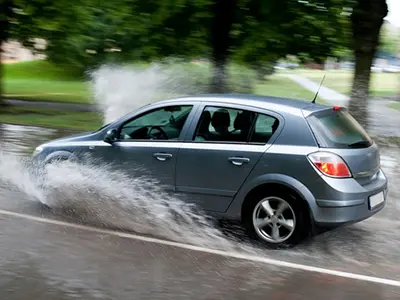
The onset of autumn is traditionally associated with worsening weather conditions, as daylight hours noticeably shorten and rain becomes a regular occurrence, capable of turning the road surface into a slippery trap for inattentive drivers at any moment. The greatest danger during this period is hydroplaning, when a vehicle's tire completely loses traction due to the formation of a film of water, leading to virtually complete loss of control and a feeling of complete loss of control. Many mistakenly rely solely on a tire's high wet grip rating, but this characteristic, while considered important, cannot alone guarantee protection against the sudden onset of a water wedge, as other, more significant factors come into play in such circumstances.
Automotive safety experts unanimously emphasize that a combination of factors, such as sufficient tread depth and a careful, predictable driving style in adverse weather conditions, are crucial for preventing loss of traction. Aquaplaning occurs when the tread's drainage system can no longer cope with the volume of water that must be quickly and effectively removed from the tire's contact patch. This results in a so-called water cushion forming in front of the tire, completely separating the rubber from the road surface. Even the most experienced driver can find themselves caught in the middle of this situation, as the onset of the process is often lightning-fast and unexpected, and the consequences develop rapidly, leaving no time for long reflection or delayed reactions.
A high-quality tire with ample tread depth is undoubtedly the safest choice for use in rainy autumn weather, as has been repeatedly confirmed by independent comparative tests. Nokian Tyres specialist Matti Morri explains that a worn tire is physically unable to effectively evacuate water, as its grooves lose the necessary depth and geometry. A clear illustration of this is a test in which a new tire with a 7-millimeter tread depth demonstrated hydroplaning resistance at speeds exceeding 80 kilometers per hour, while its worn counterpart with a 3-millimeter tread depth allowed a water wedge to form at speeds of around 60 kilometers per hour. This experiment leads us to the simple and logical conclusion of the need to replace tires promptly, without waiting for them to wear out completely and reach the legal minimum.
In addition to tread condition, maintaining correct tire pressure is equally important, as this directly affects the rigidity and stability of the tire profile when driving through water. Too low pressure prevents the tire from maintaining its optimal shape under dynamic load, making it more flexible and vulnerable to deformation, which ultimately significantly increases the risk of loss of traction and subsequent uncontrolled skidding. Therefore, regularly checking tire pressure with a reliable pressure gauge should become as routine a procedure for a responsible driver as visually assessing the condition of the tread pattern before a long trip in rainy weather.

